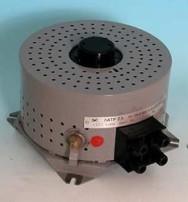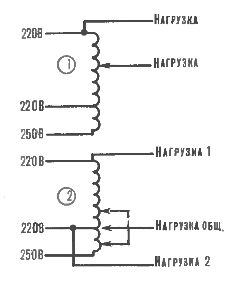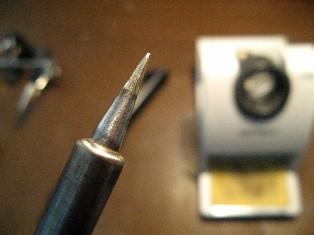Categories: Sharing experience, Electrician Secrets
Number of views: 34224
Comments on the article: 1
We upgrade LATR
 6, 9, 12 or 27 V are often supplied to low-voltage devices with laboratory autotransformer (LATR). And since the current consumption in this case is several amperes, wear (erosion) of the winding turns occurs at the contact point of the current collector (see Fig. 1), the LATR starts to “jam”.
6, 9, 12 or 27 V are often supplied to low-voltage devices with laboratory autotransformer (LATR). And since the current consumption in this case is several amperes, wear (erosion) of the winding turns occurs at the contact point of the current collector (see Fig. 1), the LATR starts to “jam”.
The performance of the LATR is fully restored if the low-voltage voltage is removed from other turns of the autotransformer. It is enough to connect the load between the current collector and the second terminal "220 V", making an additional output "Load 2" from it (see Fig. 2). Now, when the current collector moves from it to the lower position, the voltage will change from 0 to 30 V, when the slider moves in the opposite direction, the voltage is regulated in the range 0 - 220 V. Moreover, the low-voltage voltage is removed from the undamaged sections of the transformer winding.
The reworked LATR can also work as usual if the voltage in the range of 0 - 250 V is removed from the terminals "Load 1" and the current collector. It is recommended to connect it to the relatively rarely used terminal "127 V", available on the LATR block.

On top of the standard scale, install a new one made of plexiglass, and mark it in accordance with the operating mode of the laboratory autotransformer.

See also at bgv.electricianexp.com
:
